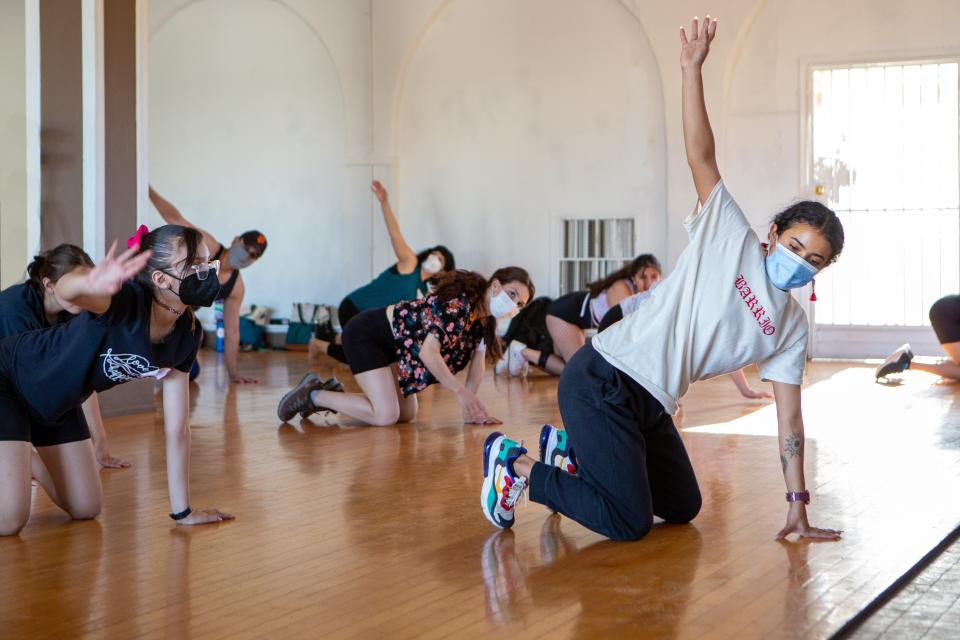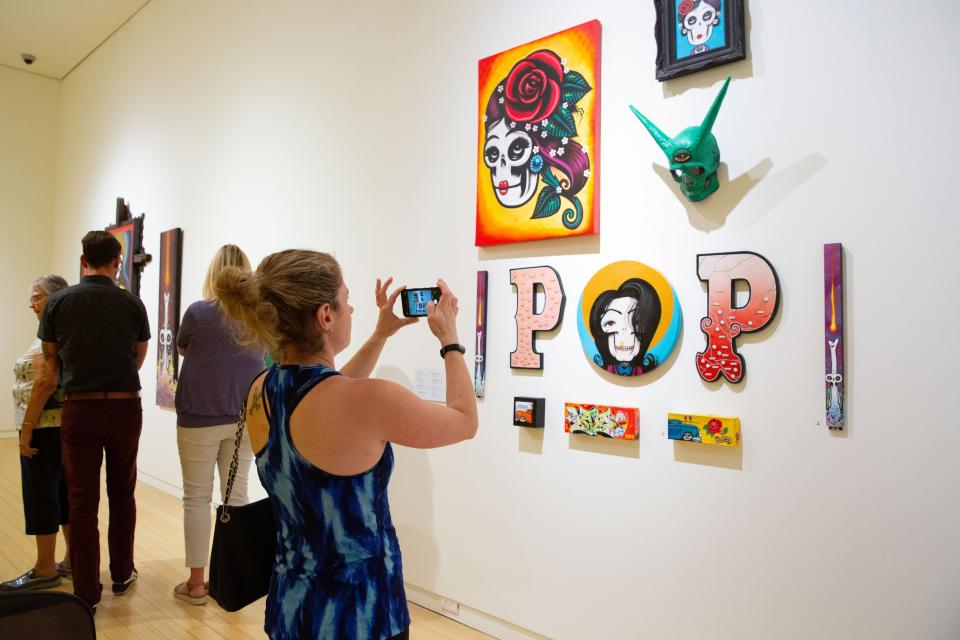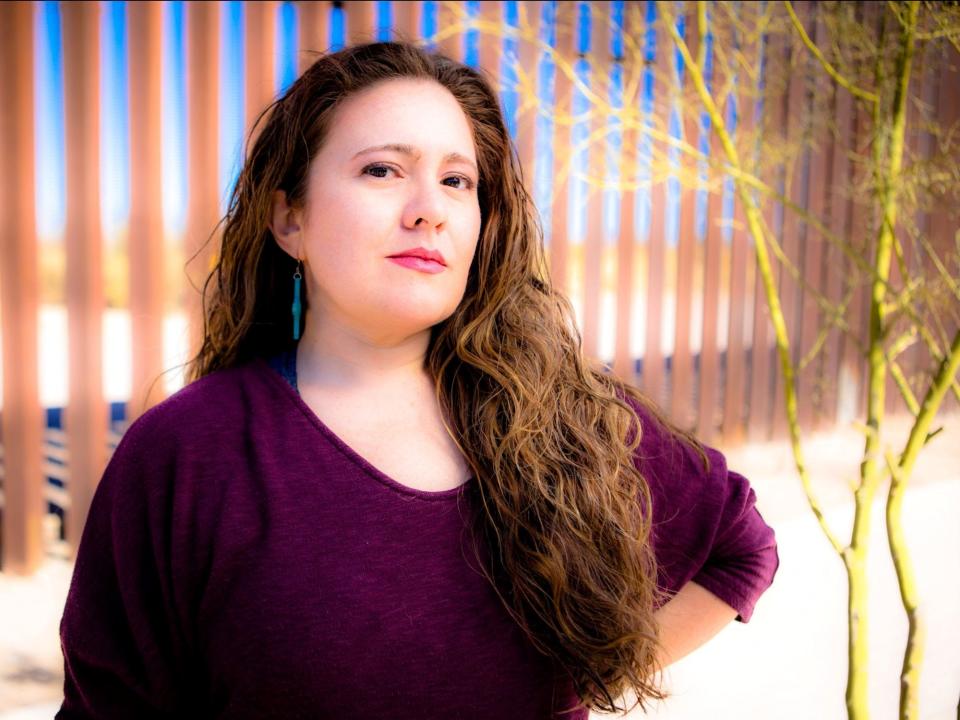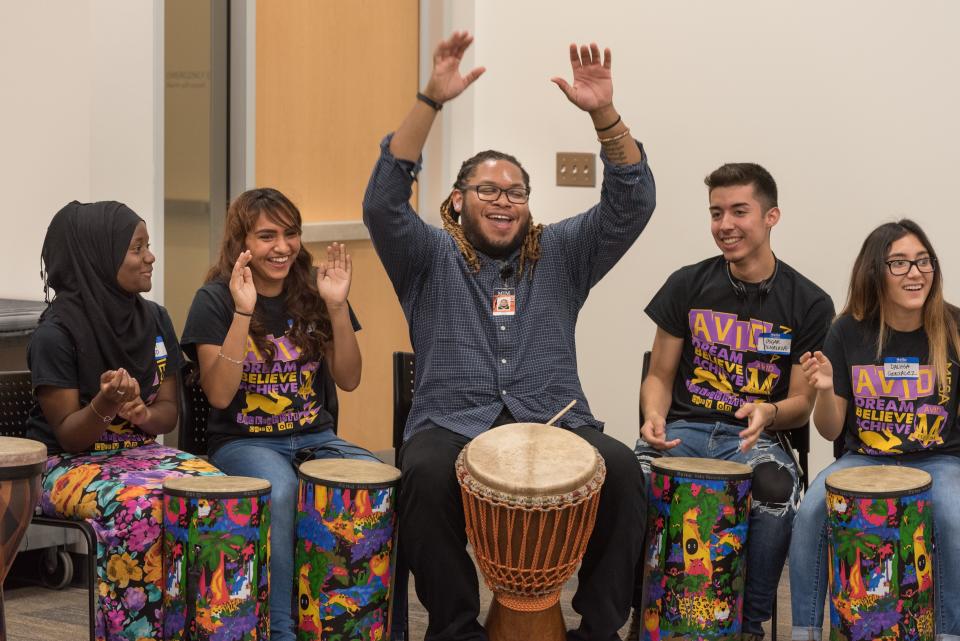The arts in Arizona just got their biggest chunk of funding ever. Why that's a huge deal
Yvonne Montoya, founder of the nonprofit Safos Dance Theatre in Tucson, had another vision: Dance in the Desert.
Montoya wanted to create a program to connect Latinx dancers across Arizona and Mexico.
She launched Dance in the Desert in 2018. Since then, more than 100 dancers have established their talent, their voices and meaningful relationships. Choreographers are now casting new dancers — now friends — in their dances. One choreographer toured Los Angeles with the dance she workshopped through the program.
None of this would have been possible without the Arizona Commission on the Arts, which gave Dance in the Desert $15,500, its primary source of funding. Montoya had pitched the idea far and wide.
“The answer was no every time,” Montoya said. “Until I talked to the arts commission. They planted the seed money and injected the resources so that when that funding ran out, we were able to move forward on our own.”
See them before it's too late: These 5 art exhibits will leave Phoenix at the end of summer
Why this arts funding matters for Arizona
Now, the agency that helps arts groups throughout the state has gotten its biggest boost ever from the legislature.
The Arizona Commission on the Arts has received a one-time appropriation of $5 million in the $18 billion state budget for 2023-2024. It's the largest amount of money the state has given the commission.
The commission hopes to provide more resources for individual arts, as well as for smaller nonprofits, younger aspiring artists, older adults and veterans.
“The arts are alive and well and vibrant in Arizona,” said Rep. Marcelino Quiñonez, D- District 11, who voted for higher funding for the arts in the 2023 budget.
“Support to our creatives is coming as it should. But this should also serve as an impetus to take part in democracy. This should become the story of Arizona for many years to come."

What is the Arizona Commission on the Arts?
Begun in 1967, the Arizona Commission on the Arts is the state agency that financially supports more than 200 arts nonprofit organizations across Arizona.
Financial awards are based on organization size and need, and can be given as general operating funds, which means groups can use the money for day-to-day expenses such as administrative fees, building costs and employee salaries.
"What that investment does is it catalyzes investment from private organizations and foundations and corporate funding,” said Steve Wilcox, the commission's communications director.
"It’s an ecosystem that we are really trying to nurture and support throughout the state that is conducive to producing art of all mediums and disciplines and really supporting what is happening in Arizona communities in terms of their arts and culture vitality."
“In a way I wasn’t surprised they received this funding,” said Catrina Kahler, CEO of Artlink Inc., a Phoenix-based nonprofit that supports community-based arts events across the state.
"By establishing this state agency and making sure that it’s intact for the next few years, they laid the foundation for it to build in that the state funding was necessary for this time.”
From 2008 until 2012, the agency had a place in the ongoing General Fund line item in the state budget, averaging about $550,000 per year to the arts. In 2012, the line item was eliminated due to recession-era budget-balancing efforts and since then the arts commission has received one-time appropriations from the legislature.
This means that state funding for the arts commission has been on a year-to-year rather than ongoing basis for the past 10 years.
Because of this uncertainty, Wilcox said, it has been difficult for the arts commission to plan how it will allocate money to individuals and groups each year.
Get ready for the 'Sky Dome': A massive native art experience is coming to Phoenix
'We believe we can do much better'
The arts commission also receives funding from the National Endowment for the Arts and the Arts Trust Fund.
In 2020, the arts commission received $2 million from the legislature, $1.2 million from the Arts Trust Fund and $841,400 from the National Endowment for the Arts.
For the 2023 fiscal year, the breakdown is $5 million from the legislature, $1.2 million from the Arts Trust Fund and $900,000 from the NEA.
State funding is essential for the arts to flourish, said Patrick McWhortor, CEO of Arizona Citizens for the Arts, the grassroots nonprofit that advocated for the arts commission at the legislature.
Not only does state funding give the commission the resources it needs to support arts organizations, it legitimizes the importance of arts in Arizona.
"As a resident of Arizona, we look to the state and our lawmakers to help make visible those things that are of value,” Kahler said. “This support is a testament to how arts and culture is part of our values system of Arizonans.”
Though the $5 million allocation to the arts commission is its biggest ever, the milestone is but a start, McWhortor said.
"The state’s commitment to support the arts in Arizona has been far short of what’s deserving and far short of what other states do,” McWhortor said. “We believe we can do much better.”
Meet Patrick McWhortor: Arizona Citizens for the Arts names new CEO
The economic impact of arts in Arizona

Arizona's arts and culture industries generated $10.9 billion for the state in 2019, according to the most recent report from the National Endowment for the Arts and the Bureau of Economic Analysis.
Arts-related industries employed more than 89,000 Arizonans who earned nearly $5.6 billion that year. Jobs in these industries include a range of employment, such as arts education, architectural services, movie production, TV broadcasting and photography.
Arts and culture compensation ranked fourth among the sectors to which it was compared, just behind retail, construction and transportation.
"We have arts, we have music, we have theater, we have extraordinary public art works, we have everything you imagine that codifies why people are moving to Arizona for jobs," said April Salomon, executive director of the Musical Instrument Museum in Phoenix.
"There is a quality of life here that is because Arizona offers the arts it does. And when you add up the work revenue we are adding to the state's economy, this is hugely important to the vitality and continued prosperity in the state of Arizona."
Why the legislature allocated $5 million for the arts this year
Funding for the arts commission was set at $2 million until Wednesday, June 22, when legislators deliberated on the budget's final draft.
In the late hours of the night, that amount was increased to $5 million, says Sen. Robert Meza, D-District 26, who has served in the legislature since 2002.
For the last two years, Meza has advocated for arts funding, from attending arts events with other legislators to listening to constituents who value the arts.
In the final hours of debating the budget, Meza reintroduced the $5 million proposal and would not vote until the arts budget was increased.
"We are the fastest growing county and one of the fastest growing states in the country,” Meza told The Republic. “We have to behave as though we are."
"We need the proper infrastructure for the arts. It’s an economic engine, and it’s an educational tool and it’s a means of healing. That was the last selling point and what got the budget to the finish line.”
Legislators who supported the arts bill also included Quiñonez and Rep. Justin Wilmeth, R-District 15.
Wilmeth, Quiñonez and Meza grew up immersed in the arts. Wilmeth participated in stage plays, improvisation classes and commercials throughout high school. Quiñonez taught English and drama before he was elected to the legislature. Meza was Phoenix Theatre Company’s development director until he assumed office in 2002.
Having legislators who participate in the arts was a key factor in the decision to increase funding, Meza and Wilmeth said. This year in particular, legislators viewed the arts as relief for people throughout the pandemic.
“A lot of people used the arts as healing after the pandemic, listening to music, going to a museum, going to the movies, going to the children’s theater with their parents,” Meza said. “People used it as a way to get back in alignment.”
"I think that this is a thank you for the art carrying everyone through the pandemic," Quiñonez said.
The vote for the arts funding was bipartisan, as it should be, Wilmeth said.
“Studies after studies have shown that arts involvement helps with creativity and helps with intelligence and learning and education," Wilmeth said.
"I look at everything very holistically. If you choose to believe that everything is political, then everything is going to be political. I choose to look at it as art, and maybe I won’t agree with the message, but I still appreciate the creativity."
56 countries: This artist has ridden his bike thousands of miles. Here's how that informs his art

How local arts organizations benefit
Once the Arizona Commission on the Arts began funding Montoya's Dance in the Desert, more private organizations began donating to her cause.
The funding allowed Montoya to fund events, bring in choreographers from across the country and cover costs for dancers and choreographers who taught at the events.
Separate from the Dance in the Desert program, Safos Dance Theatre has received funding from the arts commission since 2011. Those grants make up 10% of the organization's $50,000 operating budget and help pay for insurance costs and administrative assistant salaries, among other things.
"Without that injection of resources, we would not be able to survive as an organization," Montoya says. "It’s that important. I’m very hopeful that this injection of funding in this community will create more opportunities for artists so that we don’t have a train of homegrown Arizona talent leaving.
"We have so much talent in the state, I would love to see those resources go to nurture those artists so we can become even more competitive than we actually are on the national scene."
Bringing music and art to schoolkids
The impact of the arts commission extends to large organizations as well, including the Children’s Museum of Phoenix, Arizona Theatre Company, Phoenix Symphony and Musical Instrument Museum.
In 2012, the Musical Instrument Museum began its music education initiative. Its goal was simple: Bring students from around the state to the museum and provide educators with resources for their students after the visit.

Since its start, the World of Musical Journeys education program has served more than 75,000 children from more than 700 schools, as well as more than 2.4 million students through virtual offerings.
In 2020, the arts commission provided $50,000 to support the museum's efforts. That funding helped cover transportation costs, museum admission and educational resources, said April Salomon, the museum’s executive director.
“When the students come on field trips, we are able to bring them to MIM for two hours," Salomon said. "They learn STEM concepts and how science brings music to life. It’s critical to their understanding of the world around them through introducing music from music traditions from other countries and cultures from around the world.”
The future of the arts in Arizona
There is still work to be done.
Montoya has submitted her 2023 grant application to the arts commission. Safos Dance Theatre won’t be able to survive without the funding, she says.
The Musical Instrument Museum is rebuilding its education program in the wake of the pandemic, Salomon said. The museum will need funding from the commission to bring back more students and include more schools.
“Since the pandemic, with the rebuilding that we’ve been doing to help support schools, we are about half of where we want to be ultimately," Salomon said. "It's going to take a couple of years to get back to the trajectory that we saw in 2019.
"The funding is a tremendous step forward and, frankly, it’s long overdue. This is an important threshold. More will be needed as we are rebuilding our organizations. As much as this is a victory, there is still much more work to do.”
In 2022, 271 artists applied for the commission's Artist Opportunity Grant that supports artists whether by funding a professional conference, an artist residency program or the development of marketing or promotional materials. The commission was able to award just 75 grants.
"This should become the story of Arizona for many years to come," Quiñonez said, "that the arts are alive and vibrant and well in Arizona."
Reach the reporter at sofia.krusmark@gannett.com. Follow her on Instagram @sofia.krusmark.
This article originally appeared on Arizona Republic: $5 million for arts in Arizona: Here's who will benefit

